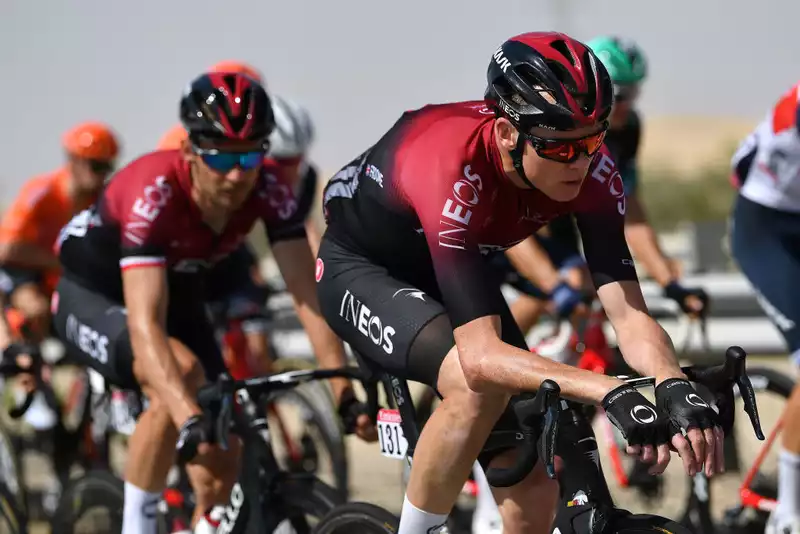In the big picture, five days of racing at the UAE Tour is unlikely to shed any real light on Chris Froome's long-term comeback from a serious injury or his hopes of winning his fifth Tour de France title in July, but his Team Ineos coach, Tim According to Kerrison, the British rider is taking all the steps necessary to return to the top of the professional cycling world.
Kellison arrived in the Middle East during the ill-fated UAE Tour and made plans for him and Froome to train in South Africa after the race. After a series of coronavirus outbreaks, quarantine and travel delays, the two arrived at their destination, but before the race ended in gloom, Kerrison spoke to Cycling News about Froome's road to recovery.
"It's great to have Chris back on the ride. I think everyone can tell he's looking good. Over the last few weeks he has gradually been able to train normally. This is a breakthrough. Of course, the level is not quite there yet, but we are getting the intensity and volume back into training," Kerrison told Cycling News shortly after Froome's second summit finish on stage 5.
"I'm sure he said this, but I'm watching the balance between left and right very closely. I am confident that things will return soon once he is able to train normally." I have been reassuring him all along.
Froome's comeback from a career-threatening crash at last year's Criterium du Dauphiné is well documented, but during the UAE Tour he revealed to the media his struggles to walk again and the surgery he had to have again after suffering an infection last December. The four-time Tour winner admitted that stepping into the pool for the first time since his accident was one of the key breakthrough moments in his career, and that even the simplest exercise felt liberating.
When the same questions surrounding breakthroughs were posed to Kerrison, the coach chose phases rather than moments, emphasizing the point at which Froome was able to begin training at a consistent level.
"For me, I think it's less about getting back on the road and on the bike and more about getting back to something closer to his normal training pattern and putting in the kind of effort that he does at this time. Everyone is looking at it through their own lens, and I was doing other things for a while and then we came back together, so that's part of how I look at it.
"But he's made great progress in the last six weeks, both on and off the bike. This event was confirmation that he is ready to race again. Of course, he is not yet at a competitive level, but his weight is good for this time of year, and from here he will move into a phase where he can train as normally as possible. He needs to move a little more than normal at this time of year, but that depends on his training," Kellison said.
"Only time will tell how far he can go between now and July, but things look good."
Because of the nature and severity of Froome's injury, Kellison said it has always been difficult to give an exact timescale for Froome's return. Much of this depended on the speed of recovery of Froome's body and the rider's rigorous rehabilitation regime.
"It was really progressive, because we didn't know how long the recovery would take. 'Initially we had other plans, which we are still considering. Of course, initially we wanted to start racing as soon as possible, but we didn't know at the time whether that would be in early January, late January, or February. As it turned out, now was the right time. Performance here has been confirmed. "
At least for now, Froome's next scheduled race is the Volta a Catalunya at the end of this month, March 23-29. With the coronavirus now widespread, this race, if it takes place, will be a much tougher test than the UAE Tour.
Progress in form and fitness is certainly needed, and the UAE Tour was a big step in the right direction, but Kerrison is adamant that he is not going to take any risks regarding Froome's long-term health.
"As with anything, you have to weigh the risks against the benefits. This is an elite sport and it is in everyone's interest to return as soon as possible, but not at the risk of his long-term health," he said.
"From the beginning, he said he would not rush back to work if there was a long-term cost. I wanted to do everything possible to get back as quickly as possible, but if it would lower my chances of getting back in the long term by one or two percent, I didn't do it."
.

Comments